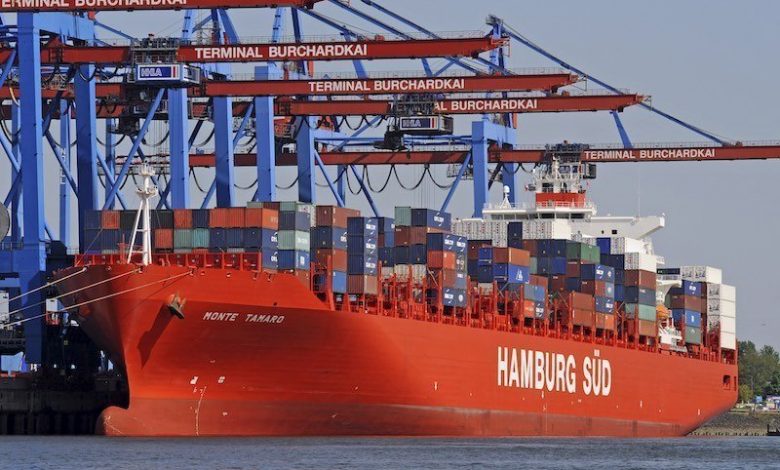Maersk learns from P&O Nedlloyd travails

Both Maersk Line and Hamburg Süd like to wear their brands on their metaphorical sleeves, eschewing normal black hulls in favour of light blue and bright red respectively on their liner fleets.
This distinctive branding comes as part of marketing to make the pair stand out from a services offering point of view.
Shipping mergers as we all know are notoriously difficult, something not lost on Maersk boss Søren Skou. Maersk’s last acquisition was 11 years back and customers still talk of the horrors of the Danish line’s struggle to integrate P&O Nedlloyd. Hence the language used by Skou when announcing the Hamburg Süd acquisition last Thursday, a deal which noticeably the Danes have not revealed any price but I am hearing $4bn.
Skou talked of a “light-touch integration”, stressing that the aim was to keep both the Hamburg Sud brand name and the company’s headquarters in Hamburg.
This is a much-changed view from 11 years ago when the venerable names of P&O and Nedlloyd disappeared.
“Today, we are a different organisation than in 2005, when we acquired P&O Nedlloyd,” a Maersk Line spokesperson tells me.
Hamburg Süd will remain a separate brand within Maersk Line’s container shipping portfolio with its own commercial set-up.
“Hamburg Süd has a competitive and attractive customer value proposition, which we want to preserve and protect,” the spokesperson maintains.
Of course, Maersk has fared better with other acquisitions such as the East Asiatic Company 23 years ago, Safmarine and SeaLand both in 1999 and Torm three years later.
Into the final month of what has been the most event-filled year in container shipping’s 60-year history and I wouldn’t bet against at least one more liner being sold.
“Consolidation will continue,” Skou told the press on Thursday.
Finally, I must admit to an omission last Friday. When scoping who might be next in container shipping’s final wave of consolidation a reader told me I had forgotten to mention Hyundai Merchant Marine (HMM). Remember little old HMM? It hogged the headlines for much of the first half of the year with its deep, painful restructuring. Now as the year ends it sits precariously, not secure in any 2017 container alliance, and with a fleet of just 455,859 slots, roughly one third of what Splash regular contributor Lars Jensen reckons a liner needs to thrive on the global stage.
The reader consoled me on my failure to mention HMM in my column. “It’s an easy mistake to make,” he said, “HMM are heading rapidly towards irrelevance.” The fact is the container narrative has accelerated at such of rate of knots since HMM squeaked to safety six months ago.

I just don’t believe these guys at Maersk. During the merger with P&O Nedlloyd they also said that they had learned from the merger with Sealand, which was completely untrue…
I recommend all Hamburg Süd employees to start looking for another job right away.
Hi Pete, I understand there was a large protest by Hamburg Süd employees on Friday